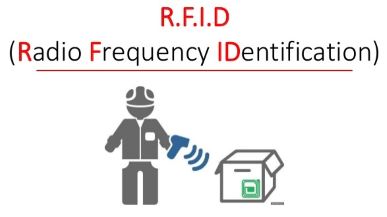RFID Full Form | What is Radio Frequency Identification
What is the full form of RFID
RFID: Radio Frequency Identification
RFID stands for Radio Frequency Identification. It is a technology which is used to track RFID tags and to capture the data encoded in these tags. It uses radio waves to identify and track tags attached to objects. The tags contain information which is stored electronically. So, it is a type of wireless communication that uses electromagnetic or electrostatic coupling in the radio frequency to identify an object, animal, or person to which a tag is attached. Today, RFID is used in various industries such as automobile, pharmaceuticals, and can also be implanted in livestock and pets to identify them.

How RFID Works?
RFID is an Automatic Identification and Data Capture (AIDC) technology. Using radio waves, it automatically identifies objects, gathers data about them, and enter this data into computer systems with little or no human intervention.
An RFID system comprises three basic components: a scanning antenna, a transceiver, and a transponder. The scanning antenna and transceiver are collectively known as RFID reader or interrogator. It is a network-connected device that uses radiofrequency waves to transmit signals that activate the RFID tag. The transponder is located in the RFID tag itself and comprises an integrated circuit and an antenna.
a scanning antenna, a transceiver, and a transponderAfter activation, the tag sends a signal back to the antenna or RFID reader, where it is translated into meaningful data. The data is then transferred through a communication interface to a host computer system, where it is stored in a database and analyzed.